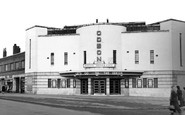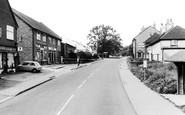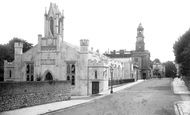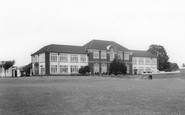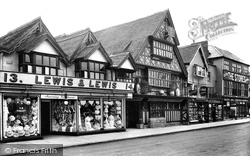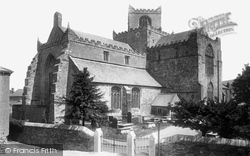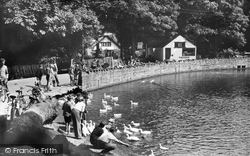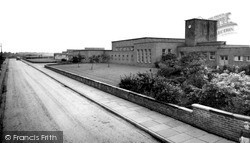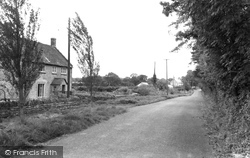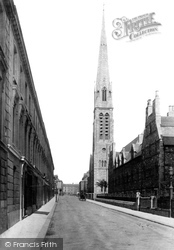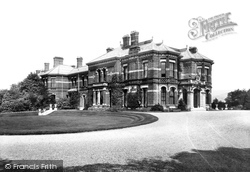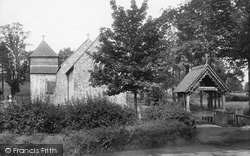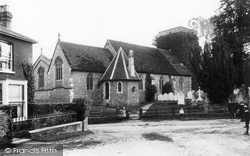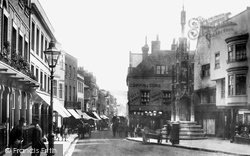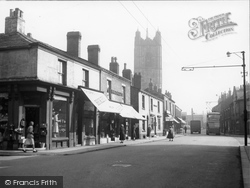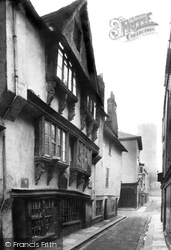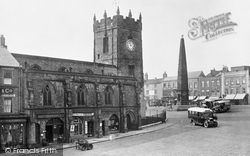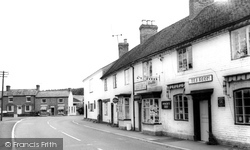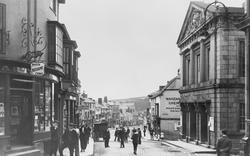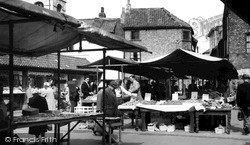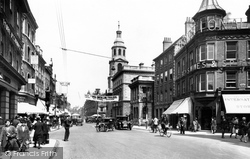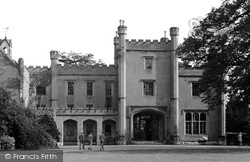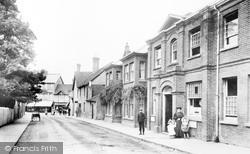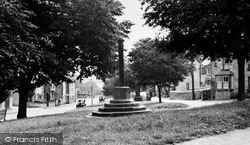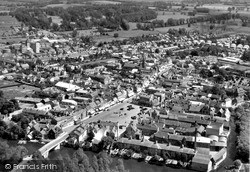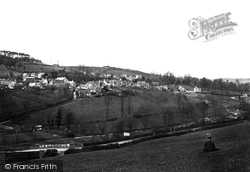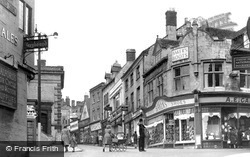Places
5 places found.
Those places high-lighted have photos. All locations may have maps, books and memories.
Photos
48 photos found. Showing results 81 to 48.
Maps
74 maps found.
Books
1 books found. Showing results 97 to 1.
Memories
381 memories found. Showing results 41 to 50.
The Old Odeon.
If you walked around the first corner to the Odeon you got a good view of the old Blast Furnaces that use to turn Corby's night sky orange. It never got dark in the Corby of my childhood. The Candle and all the steel and tube mills lit ...Read more
A memory of Corby in 1962 by
A Wartime Nursery School In Newbold On Stour
In 1944 I was three and was placed in a boarding nursery in Newbold. It was managed/owned by Miss Crott (or similar) and her sister. It must have been a large house with a big garden. One day some ...Read more
A memory of Newbold-on-Stour by
Middle Ainton Part 5
Nearly every house had an outside brick coal shed, as this was the only method of heating and cooking. Most houses had a short set of about 2-3 steps in the middle due to the slope of the land they were built on, ...Read more
A memory of Middle Rainton in 1940 by
War Years Changed Everthing
I was one year old when WW2 began - in 1938. Most of my visual memories stem from that time. I remember, without any facts to support them, the large white house that stood in the grounds of Waitrose Car Park and was in ...Read more
A memory of Barnet in 1949 by
One Day At A Time
A precised extract from the chapters in my biography relating to wartime evacuation, and particularly to Garnant. I stared morosely out of the window and watched the landscape slip by as the steam train chugged its way through ...Read more
A memory of Garnant in 1940 by
Top Of The High Street
The account by Anne Broomehead is partly correct but jumbled, having lived in Bovingdon since 1960 and worked for Mr Grainger as a paperboy, and knew Ted Gadd like an old "uncle", this is the correct version. The paper shop ...Read more
A memory of Bovingdon in 1965 by
My Old Gran, 1950s
My name is Peter Smith. I have some wonderful memories of Ryde. The flying boats in East Cowes is one of them. The trams that ran through Ryde, before the underground stock was bought in from London. I remember being severly told off ...Read more
A memory of Ryde in 1957 by
East End
I was born in Sunderland in 1948 and Christened in Holy Trinity Church, Church Walk, where all of my mother's side of the family had been hatched, matched, and dispatched. I was raised in Wear Garth till the age of twelve years old when my ...Read more
A memory of Ryhope by
Happy Days Near Colliers End
My family bought property between Colliers End & High Cross - about 5 acres. My dad used to stop there for tea after having biked from London to Cambridge and stopped on his way back to London. The acreage ...Read more
A memory of Colliers End in 1930 by
Mr Dods And The Stool
I still have the stool and ladder made in Mr Dods woodwork class. Some of the teachers I have fond memories of Mr Baker rural studies, Mr Horsnal. That bully of a teacher who seemed to like slapping the girls. He stood them on ...Read more
A memory of Snodland in 1954 by
Captions
288 captions found. Showing results 97 to 120.
This part of Fore Street is now a pedestrian precinct with trees, flower beds and benches lining the side of the road where the Frith photographer would have stood to take this picture.
It is said that it is theoretically unstable architecturally, but it has stood for 500 years.
By damming the River Dibbins, this man-made mill pool was created to provide water for the corn mill that once stood nearby.
Ancient Woolston Hall had once stood nearby; at the time of the Protestant Reformation, its occupants were staunchly Catholic.
One of Dorset's three ancient mazes stood at Leigh, though it had all but disappeared by the early 1900s.
The imposing columns are the entrance to the Theatre Royal, which stood on the site now occupied by the ABC Cinema.
Henshall Hall once stood in what is now a suburb of Congleton, the former village of Mossley. The house has now completely gone, and the lands are occupied by a new and very pleasant housing estate.
The church of Headbourne Worthy is one of the oldest in southern England: it stood for long years before William the Conqueror won the realm at the Battle of Hastings in 1066.
The church of Headbourne Worthy is one of the oldest in southern England: it stood for long years before William the Conqueror won the realm at the Battle of Hastings in 1066.
The town crier has long stood on this spot in order to communicate important news to the people of Winchester. The nearby post box stands close to the site of the old town pump.
The murderer William Chadwick was tracked down and eventually stood trial at Liverpool Assizes. He was hanged in April 1890. Dominating our picture is St John the Baptist Church.
This Tudor house stood on Foss Street, near its junction with Duke Street. The supports for the overhanging upper floors were finely carved wooden animals.
Railings mark where King's shop had stood.
MAIN ROAD c1965 A monastery stood at Hanbury in Anglo- Saxon times, when the land came into the possession of the Church at Worcester.
Edward I made Helston an important regional stannary town, and its official Coinage Hall stood in this street until the early 1800s.
At the Pavement end of the street stood the town pillory - anyone found guilty of treason was beheaded here. Little Shambles is called so because it is only a few yards in length.
A medieval cross stood here for centuries and an annual fair was held each September.
The road here was originally much narrower (see 5241, p.18), but in 1893-95 the pier was widened, involving the demolition of the Golden Lion, a popular harbourside pub, which stood on the left.
The kitchen wing of the building belongs to a former 18th-century farmhouse which stood on the site.
A cottage hospital and court house also stood here at one time.
The old market cross on the village green at Great Longstone has stood there since medieval times, when the village was granted the right to hold a weekly market.
The town originally stood on higher agricultural land, and its position on the Ouse was not exploited until the middle ages, with the growth of a market.
Its predecessor stood further north, at the site of the Roman villa.
A policeman stands on point duty at the junction of Lansdown, King Street, the High Street, and Gloucester Street, with the Greyhound Inn, built by the Stroud brewery in 1904, on the extreme
Places (5)
Photos (48)
Memories (381)
Books (1)
Maps (74)



